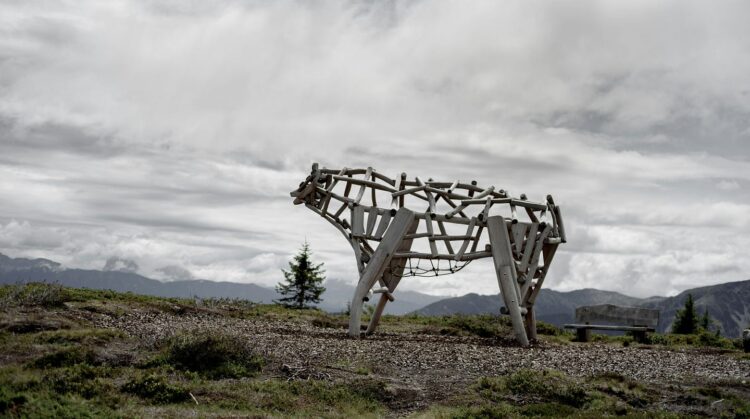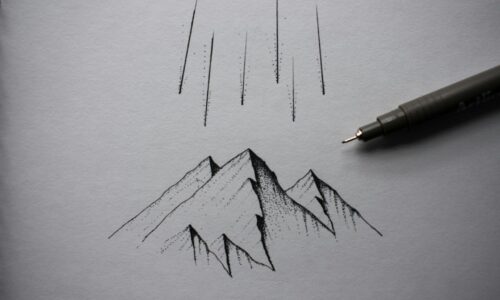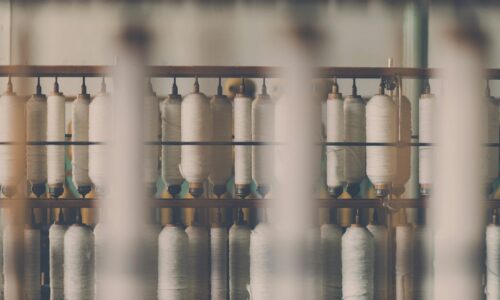The world is full of artists with a grand vision, but sometimes the most powerful art comes from the desire to disappear. No, not in a “I’m going to pack up and ghost the art world” kind of way, but in a let’s create something that’s here today, gone tomorrow sort of vibe. Welcome to the world of ephemeral landscapes — art made to blend seamlessly into nature, only to vanish like a cool magic trick.
But here’s the kicker: this isn’t just any kind of art. This is art that knows how to leave a mark… without leaving a permanent scar on the environment. Intrigued? You should be.
What Are Ephemeral Landscapes?
In the simplest of terms, ephemeral landscapes are temporary works of art that exist only for a short period before they naturally return to the earth. Think of a sandcastle on the beach, a leaf mandala in a forest, or a snow sculpture that fades with the warmth of the sun. The real magic? These artworks blend with the natural environment and leave nothing behind except memories — and maybe a little bit of joy.
Imagine walking through a park and seeing a huge, intricate sculpture made of flowers, stones, and twigs. It’s a masterpiece! You marvel at it, take a selfie (don’t act like you don’t), and then… poof. A week later, it’s gone, as if it were a mirage. What makes it so special is that it’s designed to be gone. No junk to throw away, no waste to deal with. The art, like everything in nature, follows the path of impermanence.
Collaborating with Sustainable Brands: The Green Revolution in Art
Now, we can’t talk about ephemeral landscapes without giving a shout-out to the eco-conscious folks who are making sure these artistic wonders aren’t poisoning our planet. The sustainable brands out there creating biodegradable art materials are the true heroes of the ephemeral art movement. They understand that it’s not just about creating beauty — it’s about doing it responsibly.
One example of an eco-friendly brand that supports this kind of creativity is Biodegradable Art Supplies. They offer a whole range of plant-based paints, dyes, and even clay alternatives that break down naturally. No plastic glitter here, just pure, biodegradable magic. And the best part? If it rains or a squirrel gets curious, it’s all part of the art’s journey back to nature.
Another great brand in this realm is Green Art Supplies, which makes eco-friendly sculptures and installations out of biodegradable materials like hemp, bamboo, and recycled paper. If you’re going to build a fort out of sticks, you might as well build it with materials that are actually good for the planet, right?
These brands are turning the concept of ephemeral landscapes into a movement, showing the world that art doesn’t have to be permanent to be valuable. It just needs to be intentional.
How Does This Work?
You might be wondering: How does nature respond to art that’s designed to disappear? Surprisingly well. It’s like nature’s own personal avant-garde gallery, where the exhibitions change constantly, and the materials used are as natural as the landscape itself. The secret is in biodegradable materials.
Ephemeral landscapes can be created from things like:
- Leaves (who knew they could be so artsy?)
- Sticks and twigs
- Mud and clay (hello, dirt art!)
- Petals and flowers (did we just create a nature-made Pinterest board?)
- Bamboo and palm fronds (sustainable and stylish)
The beauty of these materials is that they all break down naturally, often returning to the soil, nourishing the land they came from. This process isn’t just symbolic; it’s a practical part of the art itself. You could say ephemeral landscapes are art with a purpose — they’re not only creating beauty, they’re enhancing the environment.
The Ephemeral Art Movement: A New Kind of Artist’s Statement
Now, let’s talk about the artists behind these ephemeral landscapes. Gone are the days when artists simply focused on creating something beautiful that could hang on a wall or sit in a museum. Today’s avant-garde creators are more interested in challenging the idea of permanence — and doing it with style.
Take, for example, artist Andy Goldsworthy. His art often involves creating large-scale works in nature that use only natural materials like ice, rocks, and leaves. His most famous pieces are fleeting, vanishing with the change of the seasons, weather, or even tides. Goldsworthy’s work highlights the transient beauty of nature — and the role art can play in celebrating impermanence.
Another rising star in the ephemeral art world is Chris Drury, whose installations often incorporate both nature and human-made elements, creating a dialogue between the natural world and the man-made environment. His art is designed to break down, often returning to the earth, showing that art can not only be beautiful but can also make an ecological statement.
Why Ephemeral Landscapes Are the Future of Sustainable Art
So, why should you care about ephemeral landscapes? Well, first off, they’re the perfect way to create art that doesn’t harm the planet. And in today’s world, that’s something we should all be thinking about.
Secondly, they offer a deeper connection with the environment. Traditional art forms can often feel disconnected from nature — something that’s meant to be admired but not really engaged with. Ephemeral landscapes, on the other hand, exist in harmony with their surroundings. They invite interaction and engagement while reminding us that all things, both beautiful and impermanent, are a part of the greater cycle of life.
And lastly, these temporary art forms can serve as a gentle reminder of our own place in the world. Everything eventually fades, and sometimes the most meaningful moments are the ones we know won’t last forever. So, in a world that often feels overwhelmed by consumerism, ephemeral landscapes are a refreshing breath of fresh air.
Join the Ephemeral Art Movement
If you’re feeling inspired and want to contribute to the ephemeral landscape revolution, here are a few tips on how to get started:
- Support brands that use biodegradable materials — There are many brands creating eco-friendly art supplies and tools. (Shoutout to Green Art Supplies and Biodegradable Art Supplies for leading the way!)
- Get outside — The best part of ephemeral art? It’s made with nature, by nature. Go for a walk, gather some materials, and let your creativity bloom in the great outdoors.
- Collaborate — If you’re an artist or an eco-conscious brand, consider collaborating with others who want to make art that matters, not just for its aesthetic value but for its environmental impact.
Art That Doesn’t Just Look Good — It Does Good
Ephemeral landscapes are the future of art — a sustainable, intentional, and literally temporary form of creativity. They make a statement without leaving any trash behind. With brands creating biodegradable art supplies and materials, there’s no excuse not to embrace nature and art in its purest form.
So, whether you’re an artist or just someone who likes to watch beautiful things come and go, ephemeral landscapes are here to stay — well, at least until they don’t.
ephemeral landscapes, art, sustainable brands, biodegradable materials, eco-friendly art, biodegradable art supplies, Andy Goldsworthy, Chris Drury, ephemeral art, temporary art




